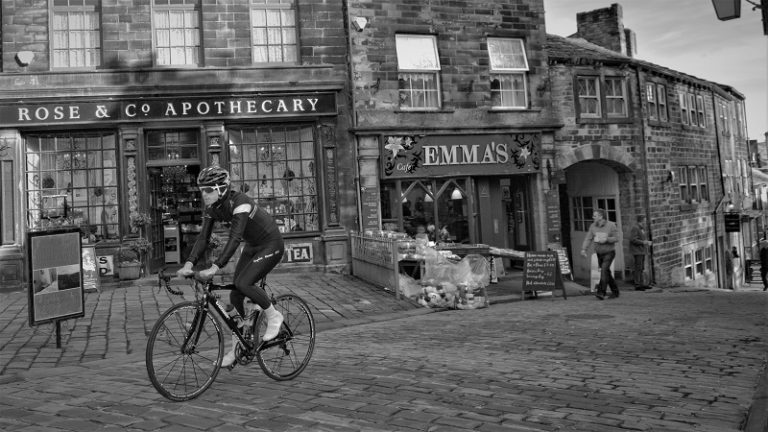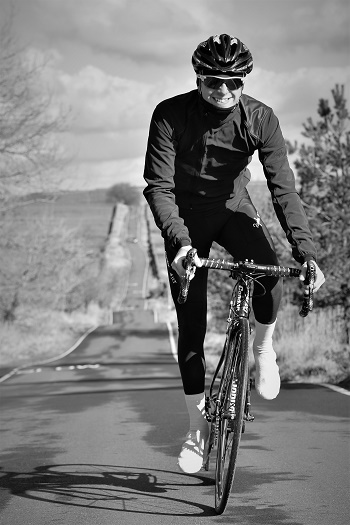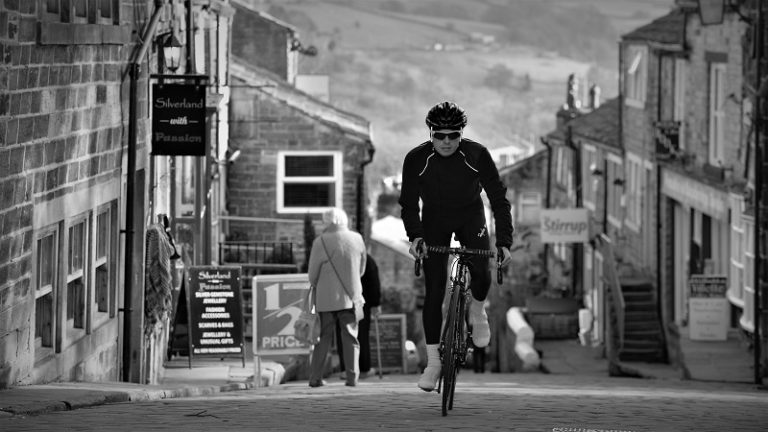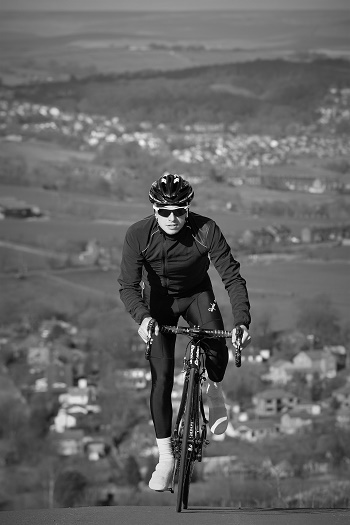If you live in a hilly area or regularly ride big hills, don’t be stuck with gears that are too big – it can put you right off climbing…
How can you tell if you are over-geared?
Struggling to keep momentum on a climb? Have to get off and do the walk-of-shame? Other riders riding away? On the largest sprocket on your cassette and small front chainring – still too hard? You could well be over-geared. A smaller chainring at the front and a larger sprocket at the back will make life easier for you when the roads starts to head upwards.

Compact
If your chainset has 53 / 39 chainrings, you could look at changing to  compact chainrings 50 / 34. Swapping chainrings is fairly straight forward providing the rings are compatable and the BCD (Bolt Circle Diameter) is the same. As well as swapping the chainrings, you will probably need to remove some links from the chain.
compact chainrings 50 / 34. Swapping chainrings is fairly straight forward providing the rings are compatable and the BCD (Bolt Circle Diameter) is the same. As well as swapping the chainrings, you will probably need to remove some links from the chain.
Teeth Grinder
If you are already riding a compact chainset and you are still finding the hills a challenge, the answer could well lay in your cassette sprockets. The largest sprocket on the rear cassette is usually your steep-climb-bail-out gear. If your largest rear sprocket is 23, 25 or 28 teeth you may find it easier to switch cassettes. A larger 28 or 32 tooth sprocket bottom gear would make things easier on the climbs.
Cage Capacity
Before replacing your cassette, check the maximum sprocket size of your rear gear. Some short cage rear gears for example, are limited to 28 tooth sprocket maximum. Manufacturers also advise a maximum teeth capacity. The maximum teeth capacity is the difference between front chainrings and the highest and lowest cassette sprocket teeth. For example 53 – 39 = 14 and 11 – 28 = 17 so the total capacity for this example is 31 (14 + 17 = 31). The capacity of the rear mech reflects the range which the rear mech can accommodate – whilst keeping the chain under spring tension.

Cassette and Chain
To swap a cassette you will need a cassette lock-ring tool and a chain whip. See our guide here.When replacing a cassette it is a good idea the replace the chain at the same time. Keeping your cassette and chain clean and  lubricated will keep them in top working condition for longer.
lubricated will keep them in top working condition for longer.
Three’s a Crowd
So is a triple the ultimate solution to get around the problem of being over geared? A triple chainset could allow more gear options for the steepest of climbs, however changing to a triple chainset though is a costly and largely unnecessary option. As well as the chainset itself, new gear shift levers will be needed to cope with the extra chainring. New derailleurs would be required to cope with the extra gearing capacity. Triple chainsets were relatively popular before the widespread move towards compact double chainsets. Most riders can get away with a compact chainset 50 / 34 and an 11 – 32 cassette for their steepest hills. Many touring bikes and tandems still use triple chainsets, but they often have heavier loads to haul.
Does gearing really make a difference?
While more recently, we tend to think of Chris Froome spinning his way over TDF climbs with a high cadence, there was a critical stage of the 2011 Tour of Spain to Agilia when he was well and truly dropped, largely because of a bad gearing choice. Local rider Juan Cobo, knew that the steep climb up Angliru would need an extra low gear and he had a 34 x 32 bottom gear fitted. He rode away from Froome and Wiggins et all on the steep climb. Cobo was able to keep a high cadence, while Froome and Wiggins were struggling to turn 39×32. Juan Cobo went on to win the Tour of Spain. He subsequently got stripped of the title for doping, but still, you get the idea – don’t be caught without enough gears!

Spinners – Winners – Grinners
Using lower gears on climbs, with a higher cadence while seated (around 80 RPM), should keep you pedalling smoothly and will make you more able to sustain climbing efforts for longer. On shorter, steeper climbs, like those in the above pics around Haworth -West Yorkshire, with Tom Moses (JLT Condor), it is more necessary to get out of the saddle more to keep momentum or accelerate. Both seated and out of the saddle climbing is easier with lower gearing.
